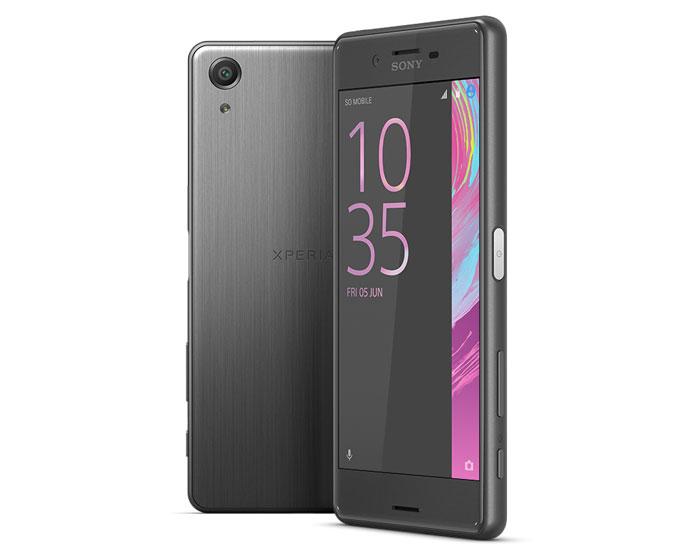Forget The iPhone 6S And Avoid The Galaxy S6 Edge, Here Is Your Smartphone Of 2015
As the New Year approaches it gives me a chance to look back over all the smartphones that arrived during 2015 to decide if there is one that sums up the important trends of the last year and where the market is going in 2016. There’s a clear delineation happening between high-end luxury flagships and the volume sales of the lower-end budget handsets. While the obvious ‘best’ handsets are going to be found in the high-end, there was a lack of risk-taking and innovation on show in this space during the last twelve months. All the action, the experimentation and the gambling was to be found lower down the portfolios.
There is one handset that I think sums up the smartphone in 2015, and where the market is going in 2016. But let’s start with two phones that many would consider to be worthy winners of a ‘Smartphone of the Year’, namely the iPhone 6S and the Galaxy S6 Edge. Worthy handsets they may be, but I ultimately rejected them for something else.
In reality, Apple only has two candidates, in the iPhone 6S and the iPhone 6S Plus. Given a direct choice, I tend to stay way from phablet phones and the larger form factors. Even through the iPhone 6S Plus’s size offers a solution to one of the perennial issues of the modern smartphone (battery life), it’s just too large for me as a day-to-day phone that slips into my pocket.
Yet the iPhone 6S doesn’t stand out for me. it’s an utterly competent phone, and it does everything that it needs to do, but no more. It iterates on the iPhone 6 just enough to be different, and offers a solid upgrade to the two-year old iPhone 5S user out of contract. Yet Apple did not wow me with it. They created a minimum viable upgrade, added one significant piece of hardware (3D Touch), one piece of software (Live Photos) and then sold it as ‘a better iPhone’. Which it is… fractionally.
While the iPhone 6S does everything it needs to do, it doesn’t stand out in the crowd as being anything other than one of the most popular phones in the world. And I’m not judging a popularity Contest here.
On the Android side of table, there’s going to be support for Samsung’s Galaxy S6 Edge. The curved long edges of the Galaxy S6 variant helped it stand out during the launch event, and took much of the public’s gaze away from the vanilla Galaxy S6 – more than Samsung expected. Production issues on the technology resulted in low yields and reduced availability of the S6 Edge. Worse than that, Samsung expected the vanilla S6 to sell in larger volumes, which led to too much stock of one variant and not enough of the other.
But I’m not marking the S6 Edge down because of availability and stock management issues, I’m marking the S6 Edge down because the curved edge promised much when it was launched, and none of that promise has been built on. The S6 Edge has not seen any improvements from Samsung to make use of the innovative hardware, it has seen very little action from third-party developers, and while the handset looks great, it hasn’t lived up to the expectations it set itself.
3D Touch may be seen as a gimmick, but Apple has given it functionality throughout the UI and third-party developers are integrating the secondary options that this offers. Where’s that extra support for the edge of the S6 Edge? If I’m going to spend more money (or receive less internal storage) compared to the vanilla S6, I want something that is genuinely different and has an impact. The S6 Edge does not do that, and practically it’s little better than the S6. And the S6 is even more a ‘minimum upgrade’ than the iPhone 6S.
Before the big reveal, three more handsets that I strongly considered and rejected came from Sony, BlackBerry, and Microsoft.

BlackBerry finally stepped away from its own BB10 operating system (it’s all about BB-8 this year) with its Priv handset. Running Android for the first time as the OS (as opposed to supporting Android apps in BB10), there was a lot of noise generated about the return of physical qwerty keyboards, the slider form function, and the return of BlackBerry.
But this was coupled with an older brand (BlackBerry’s successful years is generations behind the current smartphones, in a time before both the iPhone and Android), and hardware that was more expensive on a spec-for-spec basis. Over-priced (or under-powered), offering little extra value, this was smart marketing to the faithful but failed to grab the general public’s attention.
BlackBerry’s CEO John Chen has said it needs five million handset sales a year to break even and if that mark is not reached, the hardware division is going to be closed. On the strength of the Priv’s impact on the market, it could very well be the last major handset from the Canadians.

December has seen the Lumia 950 and Lumia 950XL hit the streets from Microsoft and it’s likely another ‘last’ handset, this time with the Lumia branding. Microsoft has finally managed to get ‘Windows Everywhere’ with the Lumia 950 family running Windows 10, just as the Surface and Surface Pro tablets, just like your favourite Dell laptop, and so on. Technically that’s stunning, but practically the Lumia 950 family lacks any design flair, the operating system needs more iteration to feel comfortable in the hardware, and the issue of the ‘App Gap’ between the Windows 10 mobile version, the Google Play Store, or Apple’s App Store remains a huge issue.
There is a place for the Windows 10 Lumia devices (something I’ll talk about more in the new year), just as there may be a place for a Surface Phone, but as a stand out device of the year? No.

Sony’s Xperia Z5 family stabilised the Japanese manufacturer after a rocky first half of 2015 that saw rumors of the division being shut down or put up for sale. That same division bore the brunt of a significant staffing cull, and the launch of the Xperia Z4 was as much the global PR team shooting themselves in the foot as it was the wrong phone at the wrong time. Nevertheless by the time Berlin’s IFA came to a close, the Xperia Z5 family, especially the Xperia Z5 Premium and its 4K screen, stole the show.
Once more the handsets are iterative updates, with little new technology. Yes the headline 4K screen of the Xperia Z5 Premium made the headlines, but the majority of the time the device runs in 1080p upscaled to so every pixel in software was represented by a 2×2 pixel gird on-screen. It was rare to see the 4K screen run in 4K. The Premium was a good phablet that looks exactly like Sony’s Xperia line going back many years.
The same was true of the Xperia Z5. It moved forwards a few small steps, but the competition from the mid- and low-range handsets closed the gap so the Xperia’s knack of having a huge leap in specifications over the competition was diminished. There wasn’t enough of a lead to make this the geekerati’s handset of power, and Moore’s Law has allowed the cheaper handsets to be close to parity in terms of day-to-day performance. The Xperia Z flagship is no longer ‘special’ enough to stand out.
I’ve had very little time with the Xperia Z5 Compact to give it a good analysis. Both the smaller size and the long battery life appeal to me, but there’s nothing new in here over the Z3 Compact. The same style, the same UI, the hardware ever so slightly bumped up. Like many of the handsets in 2015, Sony has delivered something a little bit better in 2014 but no more.
If I’m going to nominate a smartphone of the year, I want something that delivers the future, that shows a new way forward, and is a signpost for what is possible. Pretty much every smartphone nowadays is competent and will cover every basic task (and most of the advanced ones). I doubt that the future of smartphones is in the hardware, it’s going to be in the infrastructure and the processes behind the handset.
My smartphone of the year reaches a good level of competency. It has no pretensions about changing the world or delivering a unique experience. But it’s a cracking all-round handset for the regular consumer, I’ve found it to be dependable in use, it comes in at a fantastic price, and it highlights the future of smartphone development and sales.
Step forward the Wileyfox Swift.

You might not have picked up on Wileyfox. A new entrant to the smartphone manufacturers roster, this British company released two handsets during October. The Storm was the larger of the two handsets, with a 5.5 inch screen, 3GB of RAM, 32 GB of storage, microSD support, and running CyanogenMod. Priced at £199 inc tax ($295) for the unlocked handset, it’s one of many budget handsets that offer a great user experience at a smart price. Look around and you’ll find handsets from a variety of manufacturers at this price point.
But it’s the smaller Wileyfox handset, the Swift, that wins out. The handset has a 5-inch screen paired up with the Snapdragon 410, 2GB of RAM, and 16 GB of storage plus microSD. It’s a solid performer that might not win any specification shoot-outs, but the vast majority of people buying a smartphone do not need ultimate power, they need something that works. The Wileyfox Swift works, and at £130 inc tax ($190) for the unlocked handset it’s an absolute bargain I’d happily recommend to anyone that wants a good all-round smartphone.

Wileyfox also illustrates the future of smartphone manufacturing. Putting aside the ridiculous expense of a high-end flagship model (which only Apple seems to be able to turn a significant profit on), 2016 is going to see more companies spring up that use Wileyfox’s business model of a small design team working alongside Chinese manufacturing plants to build handsets that are a little bit more than ‘off the shelf’… but still rely on turnkey services for hardware integration, manufacturing, and software design.
The smartphone is well on its way to becoming a commoditized product. The future will be smart companies that can use that model to create commercial advantages, that can turn around products and ideas faster than the competition to get them to market and who can build strong brands that cut through the online chatter.

Wileyfox was not alone in attempting this during 2015, but it was one of the best implementations of this model. It delivered a competent and affordable handset, it offered a user experience that worked across the board, and it used a modern business model that is well suited to tomorrow’s smartphone market.
The Wileyfox Swift showed me the future. That’s why it’s my smartphone of the year.
About The Author :

Ewan Spence ,
Contributor
I look at the impact of mobile technology and online media.
Source :Forbes - Ewan Spence
BREAKING NEWS | HEADLINE NEWS | NEWS | DAILY NEWS | WEEKLY NEWS
WORLD NEWS | INDONESIA NEWS | BALI NEWS



















Add a comment